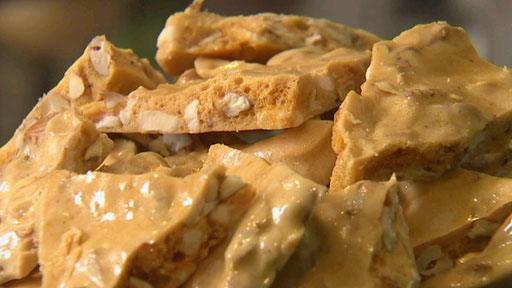
Coat a 12-by-17-inch rimmed baking sheet with cooking spray. Bring sugar, honey, and water to a boil in a medium saucepan, stirring constantly. Reduce heat to medium-high. Cook, without stirring, until a candy thermometer reaches 300 degrees. Remove from heat, and whisk in baking soda until combined and mixture bubbles. Gently pour mixture onto baking sheet without spreading. Let cool. Break into pieces.
Ingredients
Directions
Coat a 12-by-17-inch rimmed baking sheet with cooking spray. Bring sugar, honey, and water to a boil in a medium saucepan, stirring constantly. Reduce heat to medium-high. Cook, without stirring, until a candy thermometer reaches 300 degrees. Remove from heat, and whisk in baking soda until combined and mixture bubbles. Gently pour mixture onto baking sheet without spreading. Let cool. Break into pieces.